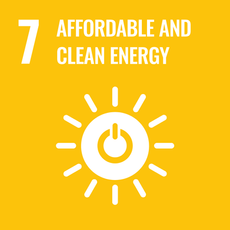Community-Centered, System Approach to Decarbonization
- Lenka Kollar

- Dec 4, 2020
- 3 min read
Updated: Dec 29, 2021
Helixos co-founder Lenka Kollar together with Sam Brinton of Deep Isolation and Per Peterson of Kairos Power recently spoke on a virtual panel about the future of nuclear energy with Professor Rachel Slaybaugh, hosted by the Berkeley Energy & Resources Collaborative (BERC). See video on our YouTube Channel below:
The session focused on opportunities and challenges with technology development, public sentiment and financing. Topics discussed included the emerging policy frameworks in the United States relating to clean energy and climate change and also the sustainable management of nuclear waste.
To open the discussion, Lenka presented a community-centered, system approach to decarbonization, where advanced nuclear energy is just one piece of the puzzle. Those of us working on climate change mitigation all have a favorite path towards decarbonization, depending on which sector we work in or what types of clean technologies and policies we are working on. The reality is that the path to decarbonization will involve many technologies, policies, and people working on the problem. The approach to this challenge should be systematic, with people and communities at the center, because that is who drives change.

A community-centered approach means that people drive change within their own neighborhoods and cities, including the places that they work. People have influence over their elected officials and company leaders to enact systematic change.
As can be seen in this simple diagram, the technologies that will enable systematic change are diverse and must be able to work together. Renewables, such as solar, wind, geothermal, and hydro, together with energy storage, provide clean electricity to the grid, powering residential, commercial, and industrial areas.
Advanced nuclear energy, including small modular reactors (SMRs), can provide reliable clean electricity to the grid along with high-temperature heat to produce synthetic fuels (synfuels) such as hydrogen. Hydrogen was recently touted as the "missing link" for the world to meet the Paris Agreement goals of limiting climate change to 1.5 to 2°C, according to a new report by LucidCatalyst. SMRs can provide the high amounts of carbon-free energy and heat that will be needed to produce enough hydrogen and other synfuels to displace the 100 million barrels of oil that are currently consumed around the world each day. Electric vehicles, trains, planes, and ships powered directly by electricity through batteries, by hydrogen, or other synfuels, all contribute to decarbonizing the transportation sector.
Many industrial processes require high-temperature heat to produce important commodities like cement, metals, and clean water through desalination. This is perhaps one of the hardest-to-decarbonize sectors and another area where advanced nuclear has a role to play by directly providing high-temperature steam for these industrial processes. Synfuels and cement can also utilize carbon from carbon capture, utilization, and storage (CCUS) methods as an added bonus to decarbonization. Finally, the multi-module approach of SMRs allows for flexibility in using some modules for electricity and others for industrial processes. For example, when renewable generation output on the grid is high, steam from modules can be diverted to produce hydrogen instead.
Helixos works with clients to understand how people, companies, and technologies fit into this system approach to decarbonization. We perform market research, stakeholder engagement, project management, and advise companies, investors, and policymakers on new clean technology. We also form connections between people and sectors to enable us to all work together on the global challenges that we face today.
Helixos' contribution to this webinar and related work with clients supports the following United Nations Sustainable Development Goals:
More specifically, the following targets:
7.2 By 2030, increase substantially the share of renewable energy in the global energy mix.
9.4 By 2030, upgrade infrastructure and retrofit industries to make them sustainable, with increased resource-use efficiency and greater adoption of clean and environmentally sound technologies and industrial processes, with all countries taking action in accordance with their respective capabilities.
13.2 Integrate climate change measures into national policies, strategies and planning.












